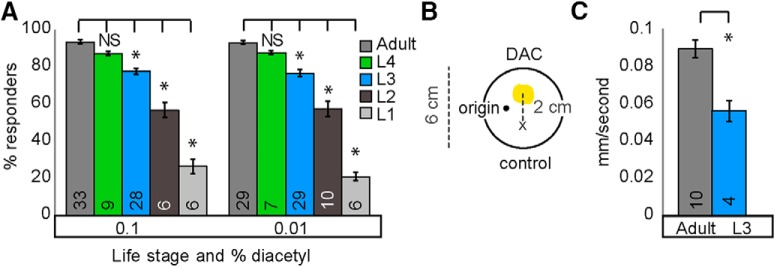Figure 1-1.
A, Larval worms generally respond less than adults in attractive diacetyl chemotaxis assays. Less than 50% of L1 and L2 stage worms responded in diacetyl behavioral assays so subsequent experiments focused on L3 and later stages. Averages and s.e.m. are shown. Numbers in brackets in or above each bar indicate number of assay plates. Data was compared using one-way ANOVA with Bonferroni correction for multiple comparisons (*=p<0.05). B, Schematic of modified round plate assay used to track speed while 10-30 worms performed chemotaxis. (See also Materials and Methods). C, Adult populations move faster than L3 populations during attractive diacetyl chemotaxis. Averages and s.e.m. are shown. Numbers in each bar indicate number of assay plates. Data were compared using unpaired, two-tailed t-tests (*p < 0.05).

